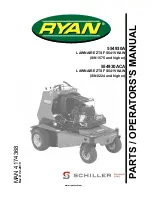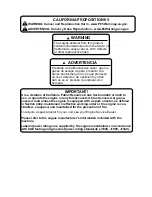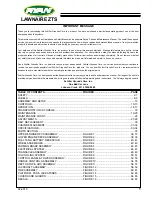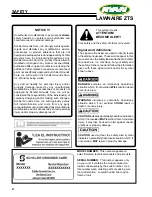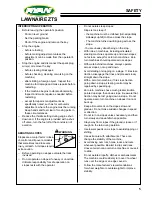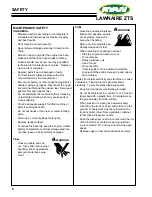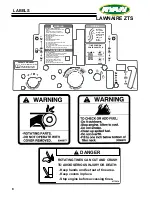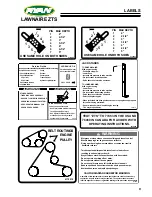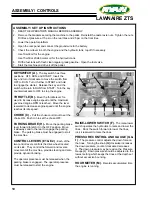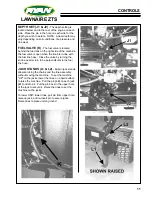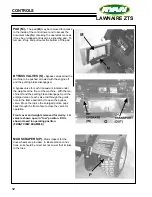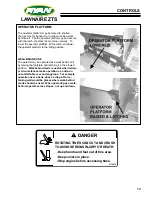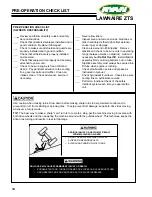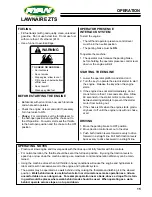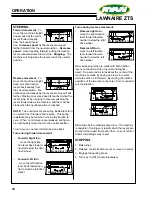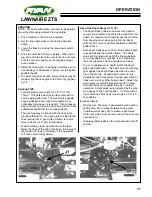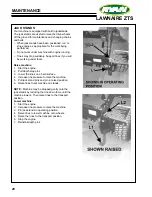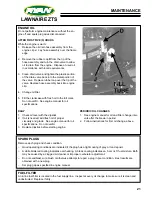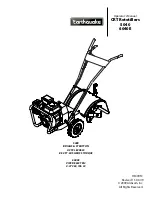
6
LAWNAIRE ZTS
SAFETY
MAINTENANCE SAFETY
IN GENERAL
– Maintain machine according to manufacturer's
schedule and instructions for maximum safety
and best results.
– Park machine on level ground.
– Never allow untrained personnel to service ma-
chine.
– Adjust or repair only after the engine has been
stopped and the tines have stopped rotating.
– Guards should only be removed by a qualified
technician for maintenance or service. Replace
when work is complete.
– Replace parts if worn, damaged or faulty.
For best results, always replace with parts
recommended by the manufacturer.
– Disconnect battery or remove spark plug wire(s)
before making any repairs. Disconnect the nega-
tive terminal first and the positive last. Reconnect
positive first and negative last.
– Do not dismantle the machine without releasing
or restraining forces which may cause parts to
move suddenly.
– Provide adequate support for lifted machine or
parts if working beneath.
– Do not put hands or feet near or under rotating
parts.
– Clean up oil or fuel spillage thoroughly.
– Replace faulty mufflers.
– To reduce fire hazards, keep the engine, muffler,
battery compartment and fuel storage area free
of grass, leaves, debris buildup or grease.
Tines
– Tines are sharp and can
cut. Use extra caution when
handling. Wear appropriate
personal protective equip-
ment.
WARNING
FUEL
– Gasoline and diesel fuels are
flammable; gasoline vapors
are explosive. Use extra
care when handling.
– Store only in containers spe-
cifically designed for fuel.
– When refueling or checking fuel level:
- Stop the engine and allow to cool;
- Do not smoke;
- Refuel outdoors only;
- Use a funnel;
- Do not overfill;
- If fuel is spilled, do not attempt to start the
engine until the spill is cleaned up and vapors
have cleared.
Sparks from static electricity can start fires or cause
explosions. Flowing fuel can generate static
electricity. To prevent static electricity sparks:
- Keep fuel containers electrically grounded.
–
Do not fill containers in a vehicle or on a truck or
trailer bed with a plastic liner. Fill containers on
the ground away from the vehicle.
– When practical, remove gas powered equip-
ment from the truck or trailer and refuel it on the
ground. If equipment must be refueled on the
truck or trailer, refuel from a portable container
rather than a dispenser nozzle.
– Keep the dispenser nozzle in contact with the rim
of the fuel tank or container opening until fuel-
ing is complete. Do not use a nozzle lock-open
device
– Replace caps on fuel cans and tanks securely.
WARNING

